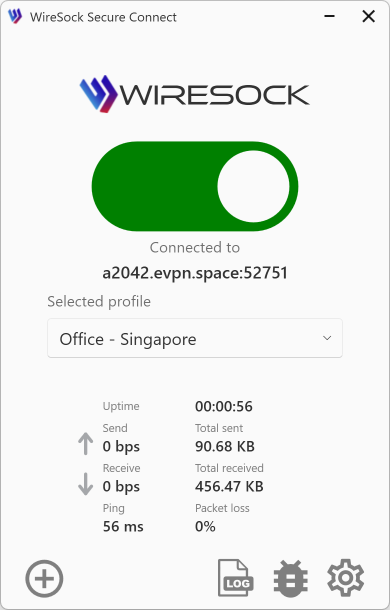What is WireGuard
WireGuard is an open-source, high-performance virtual private network (VPN) protocol and software that focuses on simplicity, security, and speed. It was initially created by Jason A. Donenfeld in 2016 and has since gained significant popularity for its lightweight and efficient design.
Official WireGuard site: https://www.wireguard.com
Key Features of WireGuard:
Simple and Minimal Codebase: WireGuard is known for its small codebase compared to other VPN protocols like OpenVPN or IPSec. This makes it easier to audit, maintain, and debug, contributing to its security.
Security: WireGuard uses modern cryptography to ensure strong security. It employs the following protocols:
- ChaCha20 for encryption
- Poly1305 for message authentication
- Curve25519 for elliptic-curve Diffie-Hellman key exchange
- BLAKE2s for hashing
This cryptographic suite is considered highly secure and efficient.
Performance: WireGuard is designed to be fast. It operates in the kernel space (on Linux, it’s part of the kernel itself), which gives it a performance advantage over user-space VPN protocols like OpenVPN. This results in faster speeds, lower latency, and less CPU usage.
Ease of Use: WireGuard’s configuration is straightforward. Unlike other VPN technologies that require complex setup, WireGuard's configuration is simple, typically requiring just a public key and a private key to establish secure connections.
Cross-Platform: WireGuard is available on a variety of platforms, including Linux, macOS, Windows, iOS, and Android. It can be deployed on a wide range of devices, from routers to smartphones and desktop systems.
Low Overhead: Unlike older VPN protocols, which may require complex handshakes or high computational overhead, WireGuard is efficient in terms of both bandwidth and CPU usage.
How it Works:
- WireGuard works by establishing secure peer-to-peer connections. Each device has a private and a public key.
- The configuration typically involves setting up the keys, defining which peers the device can connect to, and specifying allowed IP addresses or subnets for routing.
- Once configured, WireGuard establishes encrypted tunnels between peers for secure communication.
Use Cases:
- Secure Remote Access: It can be used to connect securely to remote networks, such as an office network or home network, while traveling.
- Site-to-Site VPNs: WireGuard is often used to link multiple sites or networks together securely.
- Mobile VPNs: Due to its low overhead and ease of configuration, WireGuard is a good choice for mobile VPN applications.
Overall, WireGuard is praised for its simplicity, speed, and security, making it a great choice for both personal use and enterprise-grade deployments.

